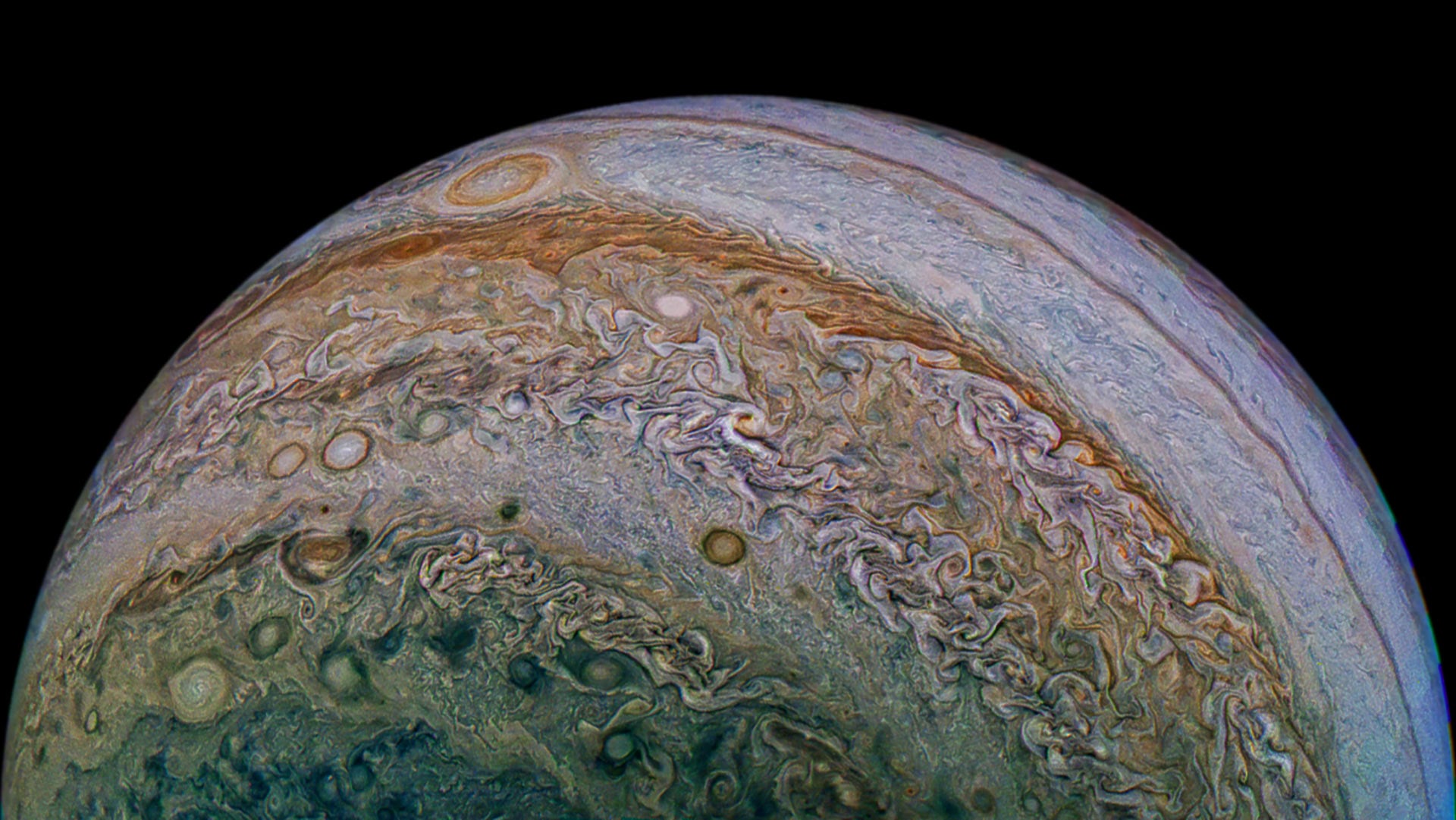It is a well-known fact among Earth scientists that our planet periodically undergoes major changes in its climate. Over the course of the past 200 million years, our planet has experienced four major geological periods (the Triassic, Jurassic and Cretaceous and
Cenozoic
) and one major ice age (the Pliocene-Quaternary glaciation), all of which had a drastic impact on plant and animal life, as well as effecting the course of species evolution.
For decades, geologists have also understood that these changes are due in part to gradual shifts in the Earth's orbit, which are caused by Venus and Jupiter, and repeat regularly every 405,000 years. But it was not until recently that a team of geologists and Earth scientists
unearthed the first evidence of these changes
- sediments and rock core samples that provide a geological record of how and when these changes took place.
The study which describes their findings, titled "
Empirical evidence for stability of the 405-kiloyear Jupiter
–Venus eccentricity cycle over hundreds of millions of years", recently appeared in the
Proceedings of the National Academy of Sciences of the USA.
The study was led by Dennis V. Bent, a, a Board of Governors professor from
Rutgers University–New Brunswick
, and included members from the
Lamont–Doherty Earth Observatory, the Berkeley Geochronology Center,
the
Petrified Forest National Park in Arizona, and multiple universities.
[caption id="attachment_139205" align="aligncenter" width="445"]
Professor Dennis Kent with part of a 1,700-foot-long rock core obtained from Petrified Forest National Park in Arizona. Credit: Nick Romanenko/Rutgers University
[/caption]
As noted, the idea that Earth experiences periodic changes in its climate (which are related to changes in its orbit) has been understood for almost a century. These changes consist of
Milankovitch Cycles
, which consist of a 100,000-year cycle in the eccentricity of Earth's orbit, a 41,000-year cycle in the tilt of Earth's axis relative to its orbital plane, and a 21,000-year cycle caused by changes in the planet's axis.
Combined with the 405,000-year swing, which is the result of Venus and Jupiter's gravitational influence, these shifts cause changes in how much solar energy reaches parts of our planet, which in turn influences Earth's climate. Based on fossil records, these cycles are also known to have had a profound impact on life on Earth, which likely had an effect on the course of species of evolution. As Prof. Bent explained in a Rutgers Today
press release
:
For the sake of their study, Prof. Kent and his colleagues obtained sediment samples from the Newark basin, a prehistoric lake that spanned most of New Jersey, and a core rock sample from the Chinle Formation in Petrified Forest National Park in Arizona. This core rock measured about 518 meters (1700 feet) long, 6.35 cm (2.5 inches) in diameter, and was dated to the Triassic Period - ca. 202 to 253 million years ago.
[caption id="attachment_139206" align="aligncenter" width="580"]
Within ancient rocks in Arizona's Petrified Forest National Park, scientists have identified signs of a regular variation in Earth's orbit that influences climate. Credit: Kevin Krajick/Lamont-Doherty Earth Observatory
[/caption]
The team then linked reversals in Earth's magnetic field - where the north and south pole shift - to sediments with and without zircons (minerals with uranium that allow for radioactive dating) as well as to climate cycles in the geological record. What these showed was that the 405,000-years cycle is the most regular astronomical pattern linked to Earth's annual orbit around the Sun.
The results further indicated that the cycle been stable for hundreds of millions of years and is still active today. As Prof. Kent explained, this constitutes the first verifiable evidence that celestial mechanics have played a historic role in natural shifts in Earth's climate. As Prof. Kent
indicated
:
Previously, astronomers were able to calculate this cycle reliably back to around 50 million years, but found that the problem became too complex prior to this because too many shifting motions came into play. "There are other, shorter, orbital cycles, but when you look into the past, it's very difficult to know which one you're dealing with at any one time, because they change over time,"
said Prof. Kent
. "The beauty of this one is that it stands alone. It doesn't change. All the other ones move over it."
[caption id="attachment_116902" align="aligncenter" width="580"]
The super-continent Pangaea during the Permian period (300 - 250 million years ago). Credit: NAU Geology/Ron Blakey
[/caption]
In addition, scientists were unable to obtain accurate dates as to when Earth's magnetic field reversed for 30 million years of the Late Triassic - between ca. 201.3 and 237 million years ago. This was a crucial period for the evolution of terrestrial life because it was when the
Supercontinent of Pangaea
broke up, and also when the dinosaurs and mammals first appeared.
This break-up led to the formation of the Atlantic Ocean as the continents drifted apart and coincided with a mass extinction event by the end of the period that effected the dinosaurs. With this new evidence, geologists, paleontologists and Earth scientists will be able to develop very precise timelines and accurately categorize fossil evidence dated to this period, which show differences and similarities over wide-ranging areas.
This research, and the ability to create accurate geological and climatological timelines that go back over 200 million years, is sure to have drastic implications. Not only will climate studies benefit from it, but also our understanding of how life, and even how our Solar System, evolved. What emerges from this could include a better understanding of how life could emerge in other star systems.
After all, if our search for extra-solar life life comes down to what we know about life on Earth, knowing more about how it evolved here will better the odds of finding it out there.
Further Reading: Rutgers Today, Columbia University,
 Universe Today
Universe Today
